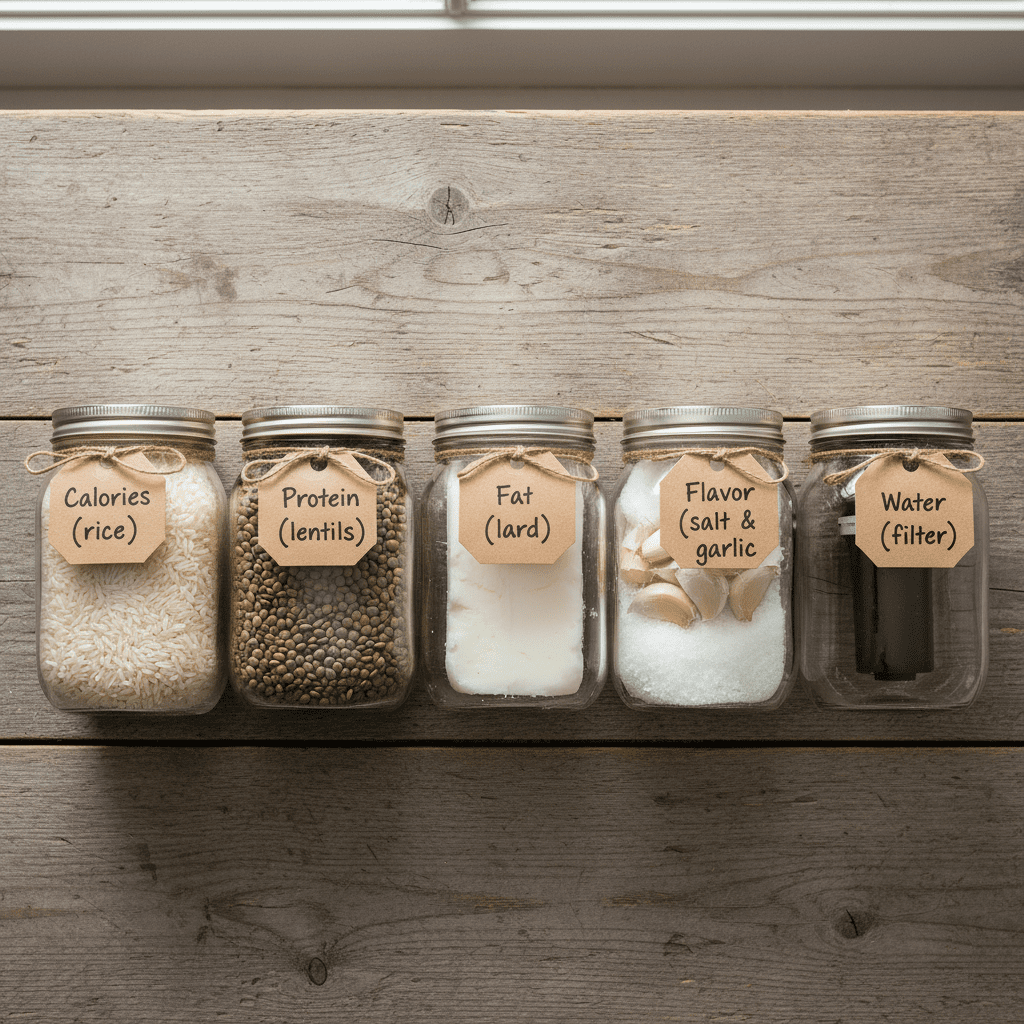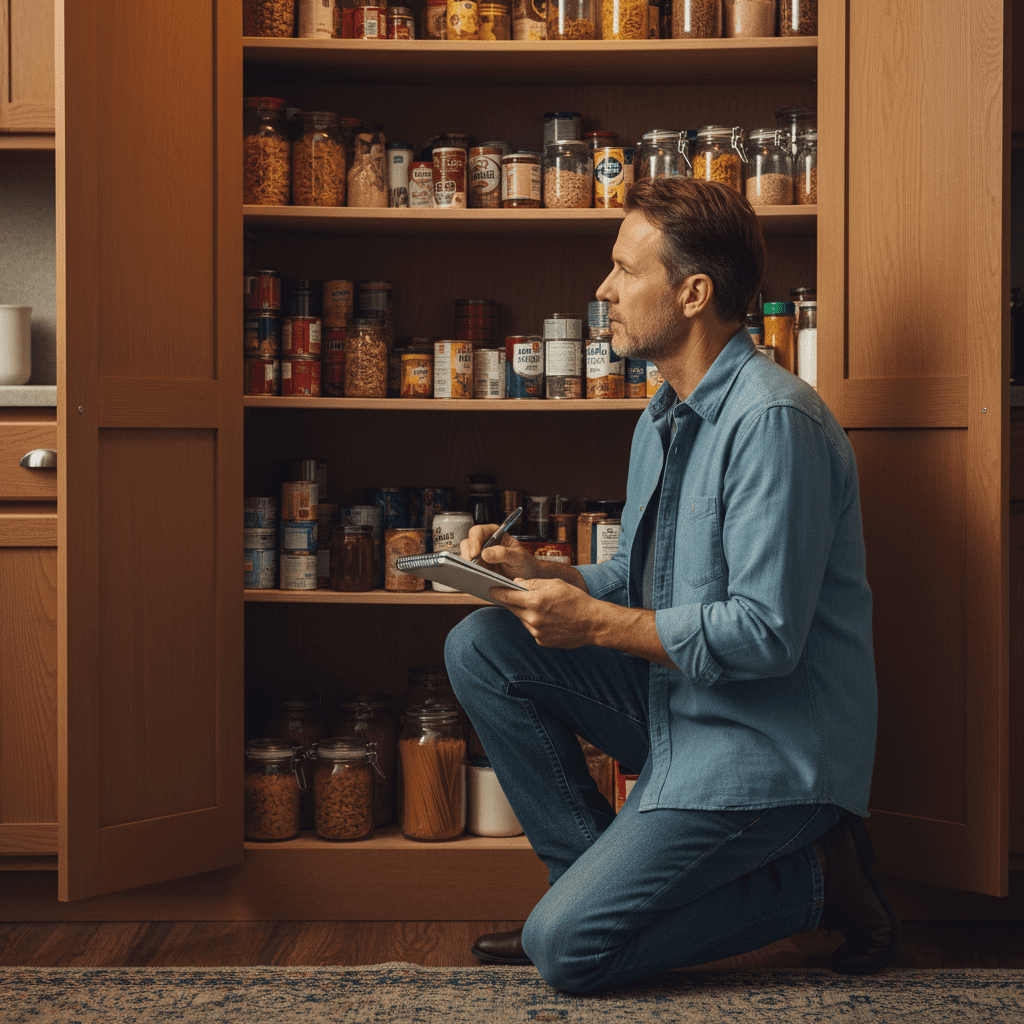“Any Person should be able to feed themselves, shelter themselves, and think for themselves. If you can’t do the first without the help of strangers or algorithms, you’re not free—you’re just lucky.”
— (freedom requires preparation)
Let’s cut through the noise.
You don’t need a fallout shelter. You don’t need a year’s supply of #10 cans. You don’t need to join a survivalist forum or wear tactical vests to your grocery run.
But you do need to know one thing with absolute certainty: Could your kitchen keep you alive—and dignified—for 72 hours if the world hiccuped?
Power outage. Job loss. Supply chain delay. Winter storm.
It doesn’t take an apocalypse. Just a Tuesday.
And if you haven’t tested your pantry lately, you’re not unprepared.
You’re unverified.
That’s fixable. In 10 minutes.
This isn’t hoarding. It’s readiness.
It’s not paranoia. It’s personal accountability.
And it’s the kind of quiet competence that lets free people sleep while others panic.
Why Soldiers Audit Their Gear (And You Should Audit Your Pantry)
In the military, they don’t wait for combat to check their rifle.
They run drills. Daily.
Because under stress, you don’t rise to the occasion—you fall to your level of training.
Your kitchen is your frontline.
Your pantry is your ammo cache.
And right now, it might be missing critical rounds.
So let’s run a Pantry Drill: a fast, honest, no-excuses inventory of what you actually have—not what you wish you had.

Step 1: Clear the Deck (1 minute)
Grab a notebook or open a note on your phone.
Set a timer for 10 minutes.
Open every cabinet, shelf, fridge, and freezer.
Do not reorganize. Do not cook. Just observe.
Your mission: find real food—not snacks, not condiments, not “healthy” bars full of soy isolate and regret.
We’re hunting for calories, protein, fat, and function.
If it won’t sustain you through a cold night or a missed paycheck, it doesn’t count.
Step 2: The 5 Pillars of a Free Person’s Pantry (6 minutes)
Scan for these five categories. If one is missing or critically low, you’ve got a gap—not a crisis, just a target.
1. Calorie Base (Stable Carbs)
→ Rice, pasta, oats, dried potatoes, flour, cornmeal.
Why it matters: Your brain runs on glucose. No carbs = fog, fatigue, poor decisions.
Minimum standard: At least 2 lbs (900g) total. Enough for 6–8 meals.
2. Protein Anchor
→ Canned beans, lentils, tuna, sardines, eggs, peanut butter, powdered milk, dry lentils.
Why it matters: Protein repairs tissue, stabilizes blood sugar, and kills hunger that carbs alone can’t touch.
Red flag: If your only protein is frozen chicken—and the power’s out—you’re in trouble.
3. Cooking Fat
→ Oil, lard, tallow, butter (if refrigerated), or saved meat drippings.
Why it matters: Fat = satiety, flavor, and calorie density. It’s also essential for absorbing fat-soluble vitamins (A, D, E, K).
Pro tip: If you’ve been saving drippings (see our post on liquid gold), you’re already ahead.
4. Flavor & Function
→ Salt, vinegar, garlic, onions, black pepper, cumin, bay leaves.
Why it matters: This isn’t about gourmet cooking. Salt preserves, balances electrolytes, and makes beans edible. Vinegar ferments cabbage into immune-boosting sauerkraut. Spices prevent morale collapse.
A kitchen without salt is a kitchen in surrender.
5. Water or Water Security
→ Stored water (1 gallon per person per day), a filter (like a LifeStraw or Berkey), or unscented household bleach (for emergency disinfection: 8 drops per gallon).
Hard truth: You can last 3 weeks without food. 3 days without water.
If your “plan” is “I’ll boil tap water,” ask yourself: What if the pipes freeze? What if the pump fails?

Step 3: The Field Test — Run a Scenario (2 minutes)
Now, stress-test your findings. Ask:
“If the grid went down tonight, could I make a hot, filling, balanced meal tomorrow using only what’s in this room?”
Try it mentally:
- Boil rice (calories)
- Heat canned beans (protein)
- Fry onions in saved bacon fat (flavor + fat)
- Season with salt and cumin (function)
- Drink filtered water (security)
If you can, you’re ready.
If you can’t, write down one item to fix it. Not ten. One.
Example: “Buy 1 lb dry lentils” or “Get a $20 water filter.”
That’s your mission. Complete it on your next store run.
Step 4: The Bigger Picture — Freedom Starts in the Kitchen
This drill isn’t about fear.
It’s about refusing helplessness.
Every time you verify your pantry, you declare:
“I am responsible for my survival. I do not outsource my dignity.”
This is not a fantasy of lone-wolf survival, but a citizen who carries their own weight, who can feed their family without begging, borrowing, or waiting for a system to save them.
And in an age of just-in-time delivery and algorithmic food deserts, that’s not extreme.
It’s essential.

Final Orders
- Run the 10-minute drill today.
- Identify one gap.
- Close it quietly.
- Repeat quarterly.
Because freedom isn’t a slogan.
It’s a stocked shelf, a sharp mind, and the quiet confidence that you’ve got this.
Now go audit like your freedom depends on it—
because it does.


1 thought on “The 10-Minute Pantry Drill: Test Your Kitchen Like a Soldier”